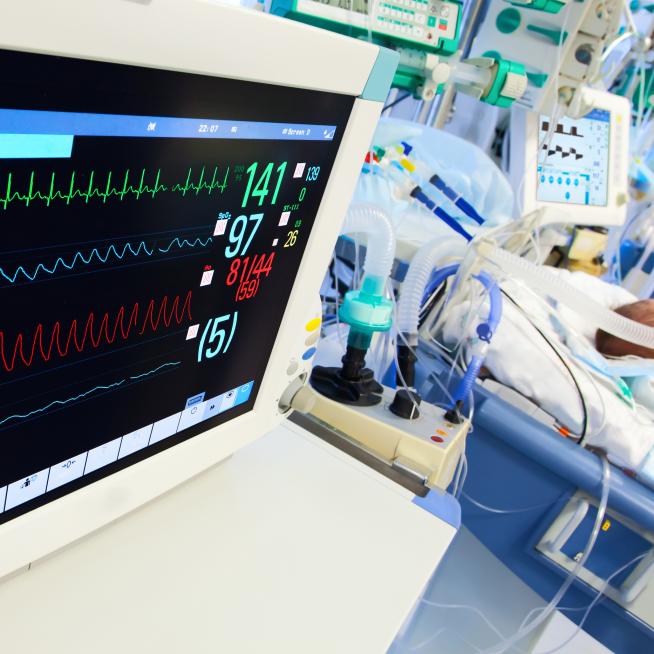Can preoperative right heart haemodynamics predict AKI after heart transplantation?

EJRC ARTICLE REVIEW
New haemodynamic parameters predictive of right heart failure have been described recently. In this study, Guven et al. aimed to determine their predictive properties for postoperative acute kidney injury after heart transplantation (1).
A common complication after heart transplantation is right heart failure (RHF) associated with acute kidney injury (AKI). New haemodynamic parameters (2-4) predictive of RHF (Pulmonary artery pulsatility index (PaPi), transpulmonary gradient and diastolic pulmonary gradient among others) have been described recently on preoperative catheterisation. In this retrospective single-centre study, the authors have tried to determine whether its factors may be predictive of postoperative AKI.
Adult patients who underwent heart transplantation from 1984 until 2016 without previous renal replacement therapy were included retrospectively in a single medical centre in Rotterdam. Primary endpoint was AKI severity during the first month after transplantation. Secondary endpoints were the occurrence of right heart failure and 1-year survival.
595 patients were included, 430 (72%) presented with an AKI, 14% with stage 3 AKI. 57 patients (10%) presented with a RHF. AKI severity was independently associated with higher right atrial pressure (p=0.029) and lower PaPi (p=0.008). The best cut-off for predicting AKI stage 3 was PaPi <1.05 and RAP>11 mmHg. Surprisingly, higher pulmonary artery systolic pressure was the only preoperative right heart haemodynamic parameter that predicted RHF.
For many years, the right ventricle has been relegated to a simple conduit structure. Thereby, it has always been the focus of less study than the left ventricle despite the fact that both ventricles are highly interdependent. With this study, Guven et al. brings forward new essential information on the functioning of the right ventricle and its relation to postoperative AKI.
Despite its many limitations, including its single centre design, this study highlights the importance of preoperative congestion on the genesis of postoperative renal insufficiency (5,6). Based on its findings, right atrial pressure and PaPi appear to be very promising areas of focus for future research. New prospective studies are necessary to validate these results, in particular to predict the occurrence of postoperative AKI after other types of surgery at risk for right heart decompensation.
Take Home Messages
New haemodynamic parameters predictive of RHF including pulmonary artery pulsatility index seem promising.
Preoperative PAPi and right atrial pressure independently predict the development of AKI after heart transplantation.
Higher pulmonary artery systolic pressure was the only preoperative right heart haemodynamic parameter that predicted RVF in this study.
This article review was prepared and submitted by William Fornier (Hospices Civils de Lyon, Hôpital Louis Pradel, Lyon, France) and Paul Abraham (Hospices Civils de Lyon, Hôpital Edouard Herriot, Lyon, France) on behalf of the EJRC.
References
- Goksel Guven et al. Preoperative right heart haemodynamics predict postoperative acute kidney injury after heart transplantation. Intensive Care Med (2018) 44:588–597https://doi.org/10.1007/s00134-018-5159-z
- Kang G, Ha R, Banerjee D. Pulmonary artery pulsatility index predicts right ventricular failure after left ventricular assist device implantation. J Heart Lung Transplant (2016) 35:67–73 https://www.jhltonline.org/article/S1053-2498(15)01308-X/fulltext
- Korabathina R, Heffernan KS, Paruchuri V, Patel AR, Mudd JO, Prutkin JM, Orr NM, Weintraub A, Kimmelstiel CD, Kapur NK. The pulmonary artery pulsatility index identifies severe right ventricular dysfunction in acute inferior myocardial infarction. Catheter Cardiovasc Interv (2012) 80:593–600 https://onlinelibrary.wiley.com/doi/abs/10.1002/ccd.23309
- Morine KJ, Kiernan MS, Pham DT, Paruchuri V, Denofrio D, Kapur NK. Pulmonary artery pulsatility index is associated with right ventricular failure after left ventricular assist device surgery. J Card Fail (2016) 22:110–116
- Angelini A, Castellani C, Virzi GM, Fedrigo M, Thiene G, Valente M, Ronco C, Vescovo G. The role of congestion in cardiorenal syndrome type 2: new pathophysiological insights into an experimental model of heart failure. Cardiorenal Med (2015)6:61–72
- Gambardella I, Gaudino M, Ronco C, Lau C, Ivascu N, Girardi LN. Congestive kidney failure in cardiac surgery: the relationship between central venous pressure and acute kidney injury. Interact Cardiovasc Thorac Surg (2016) 23:800–805